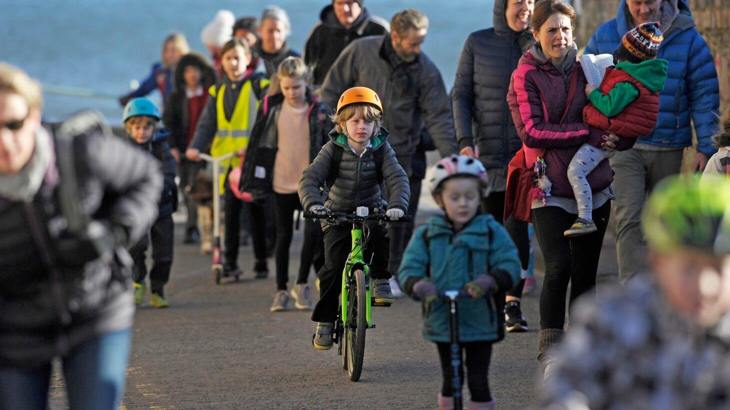Air quality is one of the biggest challenges currently facing UK policy makers. The widely reported fact of 40,000 UK deaths being attributable to poor air quality should be a major catalyst for change. We know that cycling and walking is a big part of the solution. But what is the impact? Can we calculate it?

We already know that road transport is responsible for 80% of Nitrogen dioxide (NO2) pollution where legal limits are being broken.
Current attempts to set a policy response to the challenge of air quality fall well short of what is needed.
Most notably the Draft UK Air Plan for tackling nitrogen dioxide is deficient on a number of counts:
- Dealing with NO2 only addresses part of the problem – particulate matter (PM) must be sorted out too. In London, it has been found that 45% of PM comes from tyre and brake wear. This means that even if we switched to all-electric vehicles, we would still have a damaging amount of fine dust.
- Ownership of the challenge is put on local authorities, whilst their mandate to act is restricted.
- Lack of substantive central investment specifically targeted at improving air quality.
- There is over-reliance on technological solutions to the problem and little evidence to suggest that such techno-fixes can deliver the required change.
What is the potential contribution of walking and cycling to improving air quality?
At Sustrans we are working to establish what the contribution of walking and cycling to improving air quality can be. We want to produce something that can help to support policy makers and provide evidence of benefits of walking and cycling on the environment.
Using funding from Transport Scotland, we have been working with Eunomia to come up with a model that seeks to answer the question: ‘What is the potential contribution of walking and cycling to improving air quality?’
The model seeks to articulate this in economic terms. Two distinct areas of impact are considered:
1. Reduction in car journeys net benefits (£/year):
- car journeys replaced (km/year)
- avoided emissions (g/km)
- apply damage costs (£/tonne)
2. Exposure to pollution of people walking and cycling net benefits (£/year):
- inhaled dose for counterfactual transport modes and active travellers (ug/m3)
- adjust inhaled dose to account for average trip durations (ug/m3)
- health impact data and relative risk associated with pollutions
- reduced mortality/hospital admissions (cases)
- value of health benefits (£/case)

Testing the model
The preliminary testing of the model uses case studies from the Connect2 schemes. Air quality values in respect of these schemes vary considerably, from pretty much nil to £60,000 per annum.
Interestingly, in each case, we are dealing with short corridors in urban areas. Degrees of modal shift and extent of exposure of users to air pollution from traffic varies markedly, and the areas from which users of the routes come tend to be confined to a segment or slice of a city.
When we start to scale-up the benefits from single-route schemes, which are large locally, but usually only serve a part of a city, to complex networks within cities, we are starting to see some very considerable values accruing.
The really exciting bit is that the model enables us to talk about ‘what if’ scenarios:
- What if we can generate more route users?
- What if we can increase the extent of modal shift?
- What if we can concentrate modal change among commuters?
- What if we can plan routes that reduce incidental exposure of cyclists and walkers to poor air?
Early indications are that we are likely to be talking about benefits for some of these scenarios running into millions of pounds per year for many UK cities, making cycling and walking an obvious quick-win for improving air quality.

